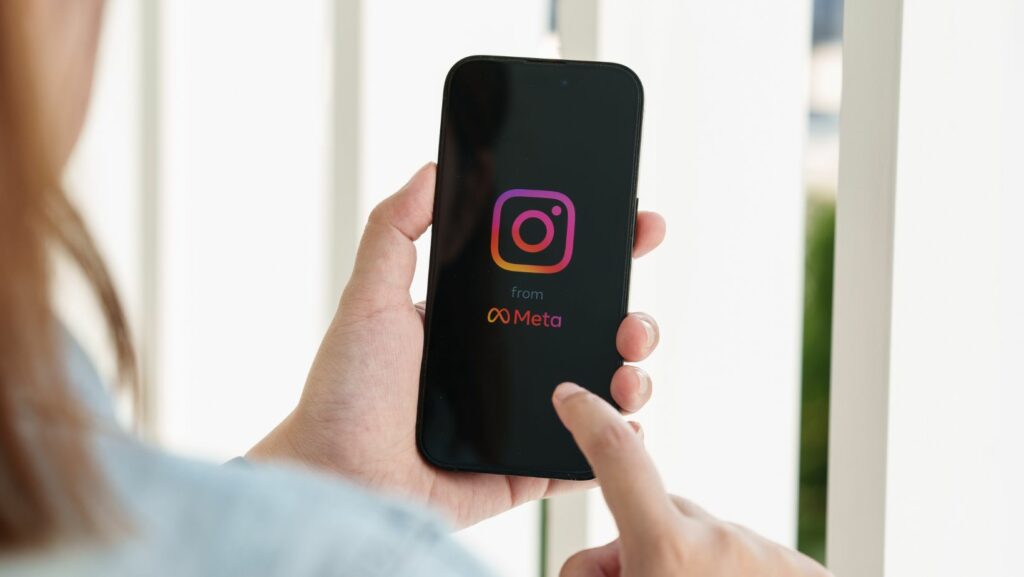In today’s digital age, Instagram isn’t just a platform for sharing photos and videos; it’s a powerful tool for branding and marketing for sport analysts. A key element of any brand’s identity on this visual platform is its logo. An effectively designed logo can make a brand instantly recognizable, convey its unique personality, and even attract more followers.
The Instagram Logo
The Instagram logo, a key element for branding on the platform, has undergone significant transformations since the app’s inception, each change reflecting broader trends in design and technology.
The Major Rebrand in 2016
 In May 2016, Instagram unveiled a new logo, marking a significant rebrand. This logo transitioned from the detailed, retro camera to a minimalist, flat, and colorful outline. It features a simple camera silhouette backed by a gradient of sunset hues, ranging from purple to orange. This shift reflected the evolving landscape of digital media, where minimalism and vibrant colors became key elements of modern user interface design. The redesign aimed to better reflect the diversity of photos and videos being shared on the platform, moving away from solely focusing on photography to include a wider array of personal, artistic, and professional content. This change sparked widespread discussions and, initially, mixed reactions among users and designers alike, but it ultimately helped reinforce Instagram’s position as a modern, forward-thinking brand.
In May 2016, Instagram unveiled a new logo, marking a significant rebrand. This logo transitioned from the detailed, retro camera to a minimalist, flat, and colorful outline. It features a simple camera silhouette backed by a gradient of sunset hues, ranging from purple to orange. This shift reflected the evolving landscape of digital media, where minimalism and vibrant colors became key elements of modern user interface design. The redesign aimed to better reflect the diversity of photos and videos being shared on the platform, moving away from solely focusing on photography to include a wider array of personal, artistic, and professional content. This change sparked widespread discussions and, initially, mixed reactions among users and designers alike, but it ultimately helped reinforce Instagram’s position as a modern, forward-thinking brand.
Impact of Logo Change on Brand Identity
User Reception and Brand Perception
 Following the logo redesign in 2016, Instagram witnessed a significant shift in how users perceived the brand. Initially, the change faced some resistance, as it often occurs with major brand shifts. However, the transition to a more minimalist and colorful logo quickly gathered widespread acceptance. Studies and polls indicated that the new logo improved brand visibility and was more attuned to the aesthetic expectations of younger demographics, including millennials and Gen Z. This shift not only retained existing users but also attracted new ones, firmly establishing Instagram as a forward-thinking brand in the social media landscape.
Following the logo redesign in 2016, Instagram witnessed a significant shift in how users perceived the brand. Initially, the change faced some resistance, as it often occurs with major brand shifts. However, the transition to a more minimalist and colorful logo quickly gathered widespread acceptance. Studies and polls indicated that the new logo improved brand visibility and was more attuned to the aesthetic expectations of younger demographics, including millennials and Gen Z. This shift not only retained existing users but also attracted new ones, firmly establishing Instagram as a forward-thinking brand in the social media landscape.
Influence on Marketing and Engagement
The updated logo also impacted Instagram’s marketing strategies and user engagement. The vibrant gradient and simplified iconography matched with the visual trends prevalent among digital startups and tech companies, making the platform even more appealing to commercial partners and advertisers. Marketing materials featuring the new logo demonstrated increased effectiveness in campaigns, resonating more with a visually driven audience. Consequently, Instagram saw enhancements in engagement metrics, such as time spent on the platform and interaction rates, which are crucial for maintaining high advertising revenue and market competitiveness.
Design Analysis of the Current Instagram Logo
Color Scheme and Typography
 The Instagram logo employs a vibrant gradient that transitions smoothly from purple to orange. This choice not only adds depth but also symbolizes energy, youth, and creativity. The logo’s color gradient is designed to capture the eye, making it instantly recognizable. Typography in the Instagram logo plays a minimal role but it’s crafted to complement the logo’s sleekness. It uses a custom, sans-serif typeface that is both modern and approachable, enhancing readability and maintaining brand consistency.
The Instagram logo employs a vibrant gradient that transitions smoothly from purple to orange. This choice not only adds depth but also symbolizes energy, youth, and creativity. The logo’s color gradient is designed to capture the eye, making it instantly recognizable. Typography in the Instagram logo plays a minimal role but it’s crafted to complement the logo’s sleekness. It uses a custom, sans-serif typeface that is both modern and approachable, enhancing readability and maintaining brand consistency.
Symbolism and Minimalism
 Symbolism in the Instagram logo is evident through its camera silhouette which serves as a universal symbol of photography. This not only reflects Instagram’s roots as a photo-sharing application but also underscores its emphasis on visual storytelling. The shift to minimalism is marked by the logo’s streamlined design, eliminating any extraneous details that could distract from the core symbolic element. This minimalistic approach aligns with current design trends, emphasizing ease of recognition and enhancing user engagement across various digital platforms. The logo embodies a perfect balance between form and function, ensuring it remains effective in diverse marketing contexts.
Symbolism in the Instagram logo is evident through its camera silhouette which serves as a universal symbol of photography. This not only reflects Instagram’s roots as a photo-sharing application but also underscores its emphasis on visual storytelling. The shift to minimalism is marked by the logo’s streamlined design, eliminating any extraneous details that could distract from the core symbolic element. This minimalistic approach aligns with current design trends, emphasizing ease of recognition and enhancing user engagement across various digital platforms. The logo embodies a perfect balance between form and function, ensuring it remains effective in diverse marketing contexts.

